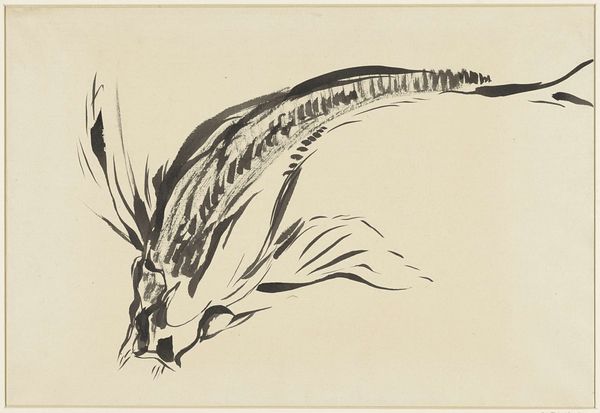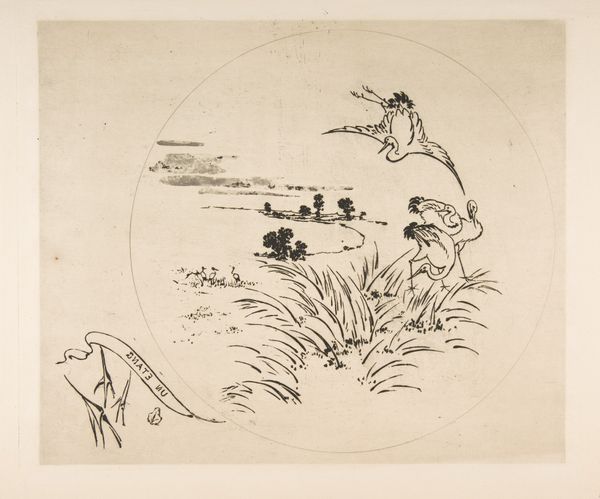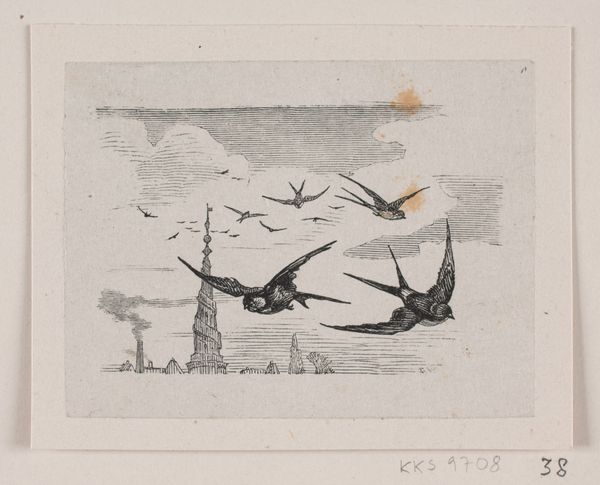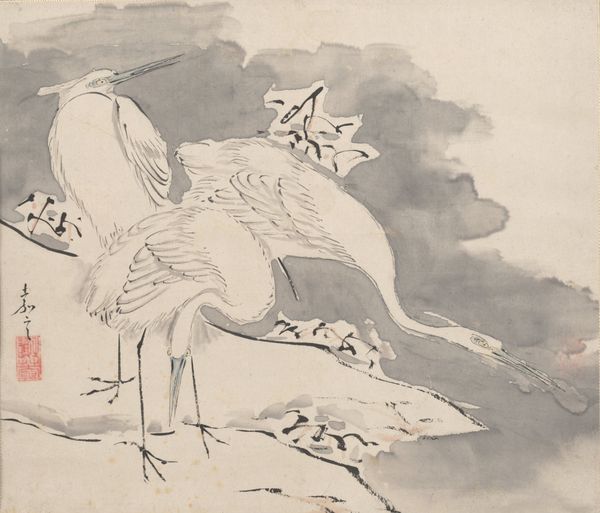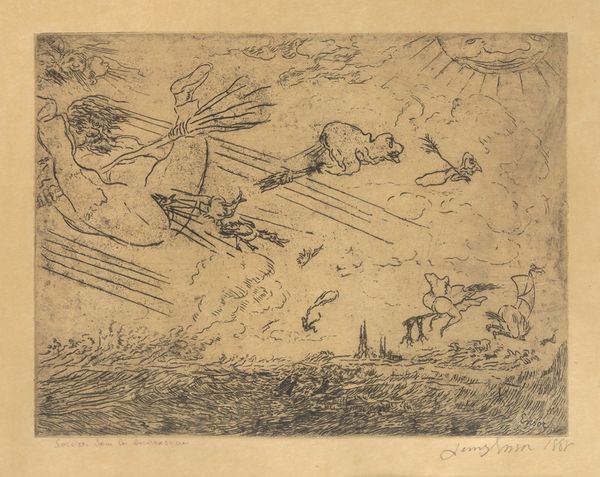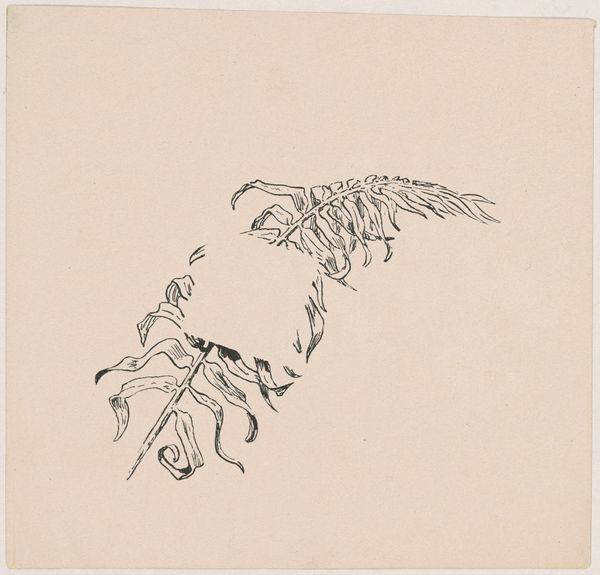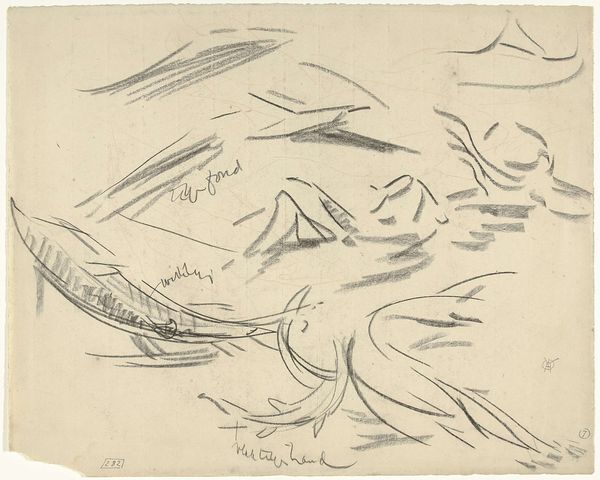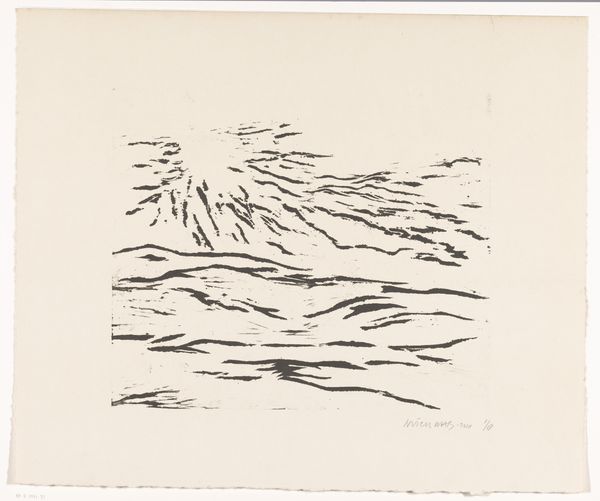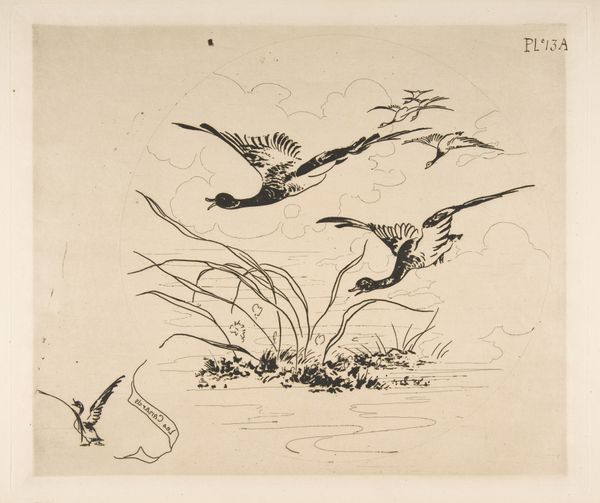
drawing, ink, pen
#
drawing
#
ink drawing
#
pen drawing
#
landscape
#
figuration
#
ink
#
geometric
#
pen
#
surrealism
#
modernism
Dimensions: sheet: 28.9 x 39.7 cm (11 3/8 x 15 5/8 in.)
Copyright: National Gallery of Art: CC0 1.0
Curator: Looking at this piece, I can’t help but feel a sense of foreboding. The landscape appears jagged, almost hostile, and the bird, while possessing that skeletal quality, gives me pause. What’s your read? Editor: Well, let’s orient ourselves. What we're looking at is Dorothy Dehner's "Country Living or Bird of Peace" from 1946, created with pen and ink. Considering it comes from that postwar moment, that somber quality may be intentional. Curator: Absolutely. The symbolism here is complex. This stark black and white drawing presents a juxtaposition – the title evokes tranquility, a peaceful rural life, yet the visual language speaks of something much darker. Is this peace achieved through violence? Editor: The historical context is paramount. World War II had just ended, and the world was grappling with immense loss and the dawn of the atomic age. Art became a critical tool for navigating collective trauma and fear. Do you consider this a manifestation of the period's anxieties? Curator: Undoubtedly. The skeletal bird suggests vulnerability, mortality even, perched above what appears to be a landscape formed by sheer, dangerous rock formations. The contrast between the ‘country living’ aspect and this sense of inherent danger really stands out. Editor: We also see a fragmented depiction of clouds, or perhaps disturbed water surfaces above. The imagery feels consciously disjointed. Think about the traditional depictions of peace – doves, lush landscapes – Dehner actively inverts these symbols, making a statement about the broken promises of the time. The modern style, drawing from surrealism, expresses these concepts, what would your approach be to interpreting it within the cultural movement? Curator: It certainly reflects a sentiment shared by many artists of that era – a disillusionment with utopian ideals and a growing awareness of societal fragility. Dehner's composition implicates not just the external world, but also the internal landscapes of human consciousness and emotional experience. This image speaks to anxieties around human survival, ecological destruction and also, the individual's role. Editor: The skeletal bird evokes mortality, the rugged landscape feels dangerous. With "Country Living or Bird of Peace," Dehner masterfully portrays not the peace we aspire to, but a disquieting and surreal version marked by postwar anxieties. It prompts us to question dominant narratives and probe the deeper complexities of existence. Curator: Precisely. I find it remains remarkably poignant and evocative, compelling viewers to consider the human condition, its struggles and resilience amid unsettling circumstances.
Comments
No comments
Be the first to comment and join the conversation on the ultimate creative platform.
